Chest to Wall Handstand Mistakes
The problem with learning to handstand that when you first start off you obviously can not stand on your hands. You are most likely lacking balance but possibly also strength, coordination and general body awareness.
In order to get anything at all started we need to look for progressions that allow us to take balance out of the equation. This is where your new best friend, the wall, comes into play. You can use the wall for intense conditioning, cut out balance to work on alignment and you can slow things down to truly work your body awareness and coordination.
My math teacher always used to say the calculator is only as smart as the student who uses it. Well, same thing is true here. The wall is only as efficient as the athlete makes it. If you train without proper form and attention you will slow your progress down and you can potentially even injure yourself.
Do not look at the wall
I know it is tempting when you get tired or when pressure increases but you are really not helping yourself. Here is what happens: If you look at the wall your chin travels to your chest. This makes it easier to open your shoulders into flexion. This might even visually improve your line but the problem is open like this you can not elevate the scapula. This means you can not push tall, you can not protect your shoulders from injuries and you can not take full control of your handstand.
Instead pull your head back to look at your hands, allow your shoulders to slightly close and push tall from your shoulders.
Especially watch out not to look at the wall when practicing tuck slides, L Handstand holds and wall handstand endurance holds.
Do not lean against the wall
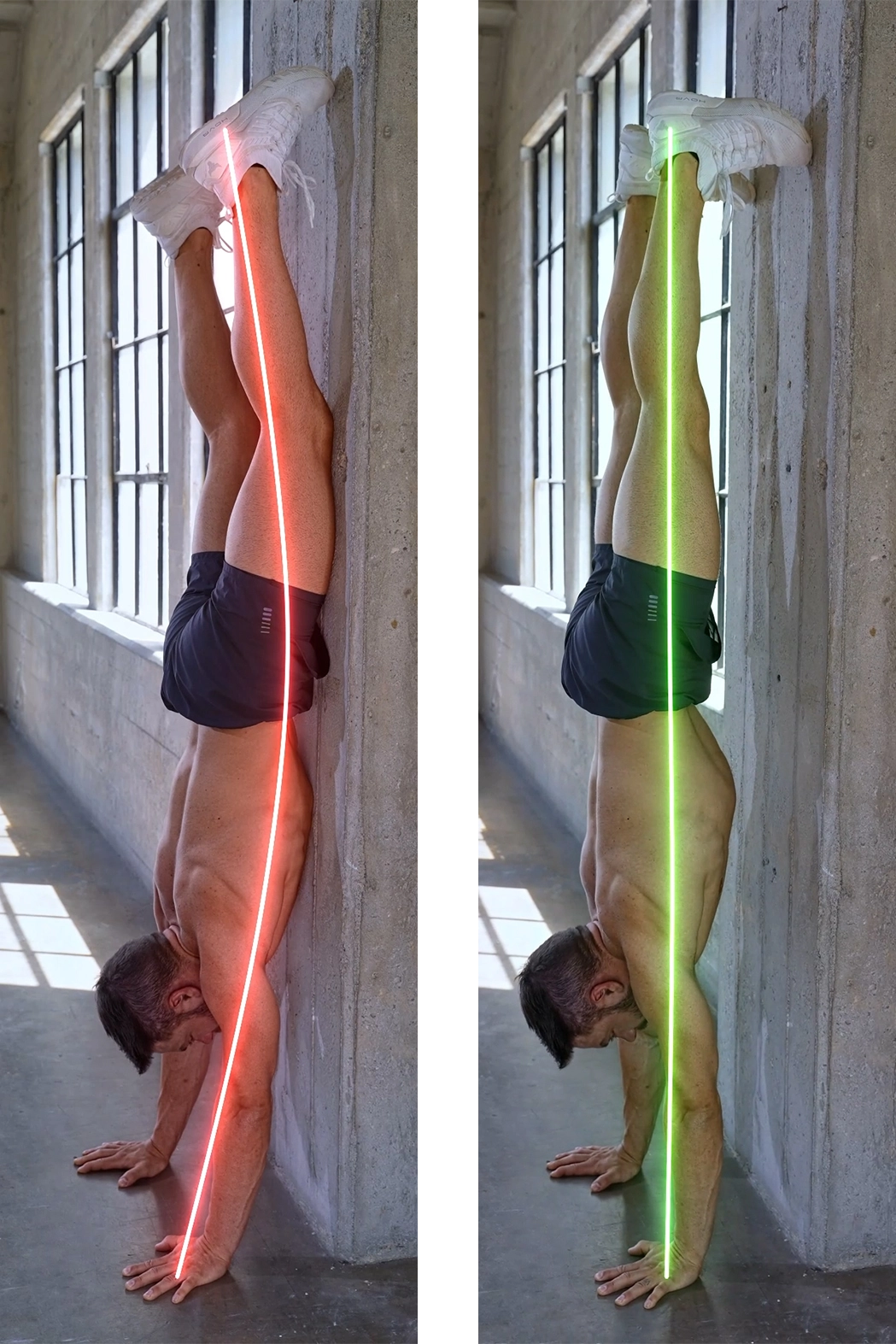
This is training. Not nap time. Your feet should be the only thing touching the wall! If you can feel your quads, hips or even belly touch the wall you are drastically lacking engagement. Work on your planks and handstand specific core drills on the floor to build specific strength and coordination.

It is recommended to dry swim quite a lot here. Work these until your body can go into absolute auto pilot so when you are upside down during your next handstand training session you can focus on your legs and shoulders instead.
Engage your core to lift your hips off the wall so you can engage the muscles needed for your handstand and you can protect yourself from injuries.
Do not bend your elbows
Unless you have a very big hyper extensions you have to fully lock your elbows and turn the pits of the elbows slightly towards the front. Imagine waiting for the bus. You would lock your knees. Waiting in a half squat would be exhausting. Same in your handstand!
Bent elbows are weak elbows making you spend so much energy for nothing! Additionally, with bent elbows it becomes almost impossible to push out tall. Usually the scapula first gets depressed and then the elbows bend. If your arms are already bent during the chest to wall handstand I can almost know for a fact that you are not pushing out tall!
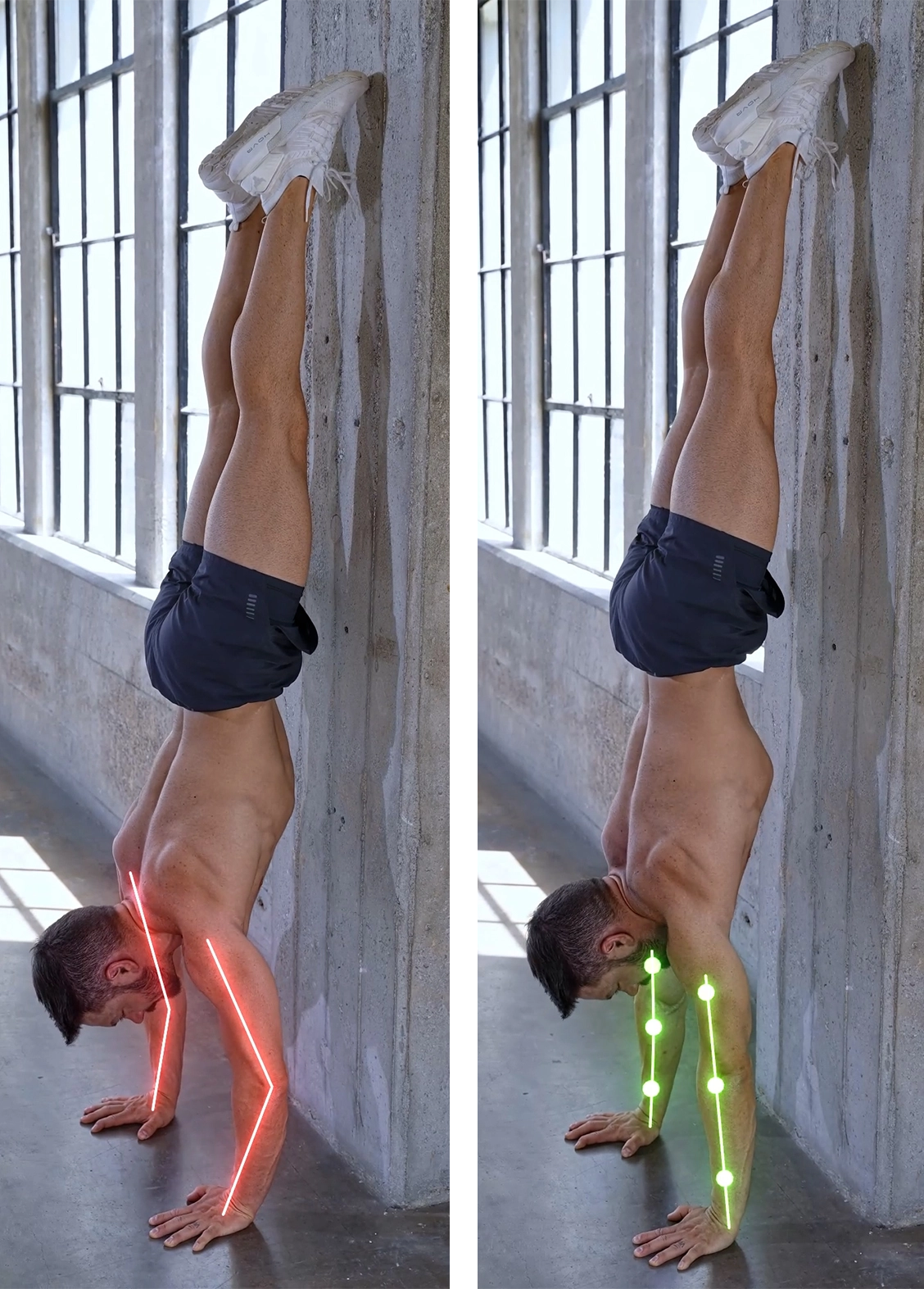
If you are struggling with bent elbows in the handstand we first have to figure out why they are bending.
Do your elbows fully lock out in general? If not, do not worry. This will not hold you back from your handstand journey. It is not ideal but nothing ever is. Stretch and roll your biceps and shoulders. Keep your arm warm during the day. Slowly over time loosen the joints and try to work towards a straight elbow. Be gentle and careful. Slow progress is perfect progress here. If you want to take your elbow extension work more serious or start to feel pain or instabilities find a sports physio therapist in your area to work with.
If your elbows do fully straighten without the pressure of your body on your arms the answer is also rather straight forward. You are lacking strength. All arm extension drills are great here but especially handstand specific ones will come in handy. Work towards your handstand push up. HSPU conditioning is extremely scalable to all levels. Start with Downward Dog / Pike Push Up work. You can also include isolation work for the triceps such as overhead triceps extensions and triceps push ups.
Arched back caused by closed shoulders
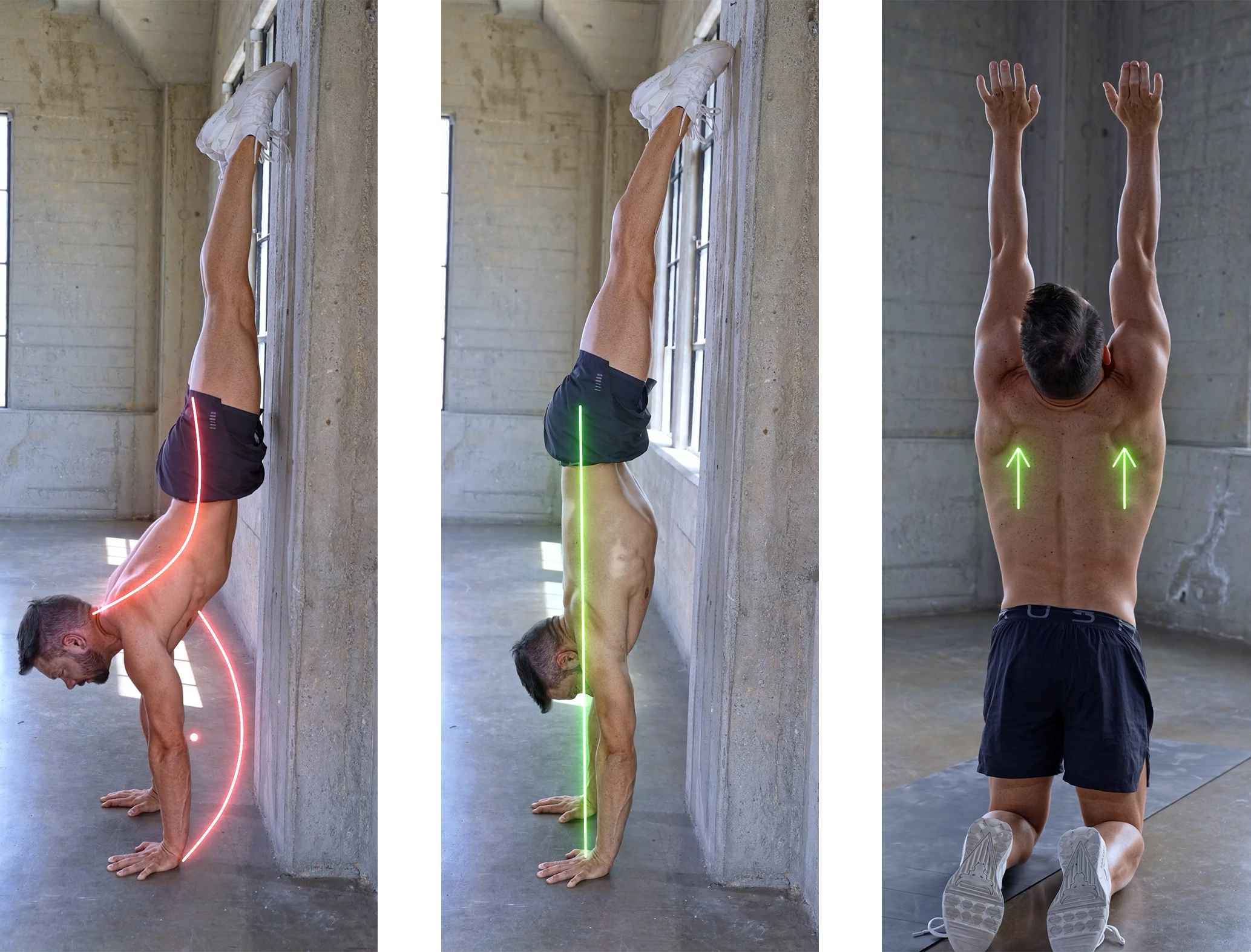
The banana handstand is the nemesis of everyone starting out with handstands. If your shoulders close they create an angle and the back arches automatically to make up for it. Engaging your core won’t fix this problem. Whilst Flexibility can be the limiting point here a lack of scapula elevation strength and especially coordination is usually the main issue.
Unless you know for a fact that your shoulders are already hyper mobile I would recommend to to work on both. Include traditional shoulder opening stretches into your daily training to work towards greater shoulder flexion flexibility but especially include shoulder shrug variations to build specific strength and coordination. Limit traditional stretches to around 25% of the total amount of work put into your shoulders.
Don’t focus on your line
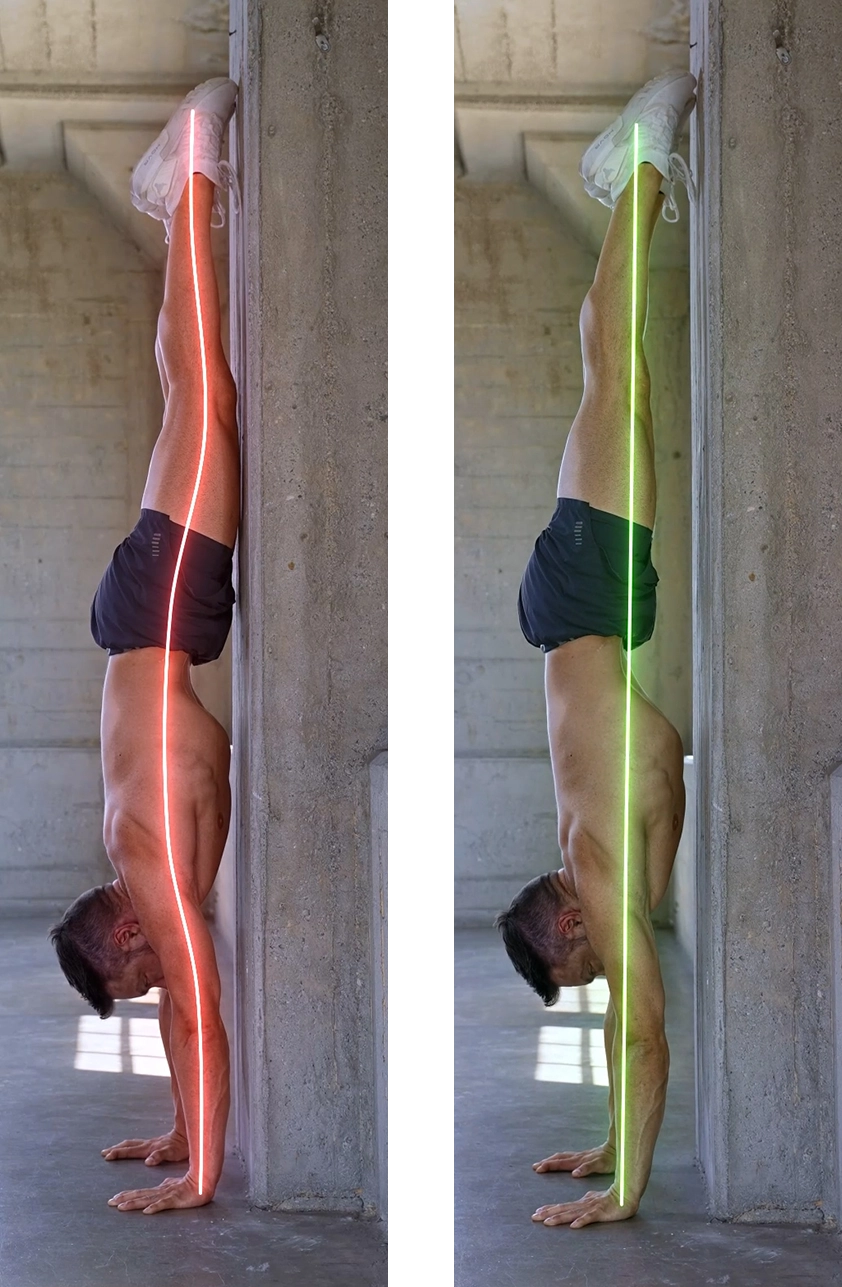
I know it is tempting. We all want to have this perfect line for the beach pics on the next summer vacation. Whilst I am all about finding what ever it is that motivated you working on your line when still trying to improve your chest to wall handstand is not the best investment of your time. First of it is important to mention that you will not hit a perfect line when standing at the wall as you have to lean at least a bit.
Secondly, it is important to understand that line is really not what counts in your handstand. There are plenty of professional, very high level hand balancers out there that do not have a perfect line. Instead they have ultra highly elevated scapula and this is exactly what you need.
Stack yourself right, possibly even keep your shoulders slightly closed but cover your ears with your shoulders. Push out as tall as you can!
Become your own coach
Chances are high you don’t have a coach in the room who is watching your every move when ever you are training. This means you have to manage your own workouts and take care of form and corrections. It is impossible to improve your wall walks and handstands in general if you do not understand your mistakes. This is what this post is here for.
Study these typical mistakes.
Compare yourself to me on the video.
Truly understand what I do wrong in the examples.
Understand what these mistakes do yo my handstands.
Work on the cure.
Dominate your handstands!
As always knowledge is king. The more you know about handstands, your own body, training in general and handstands specifically the more efficient your workouts become and the faster you can progress.
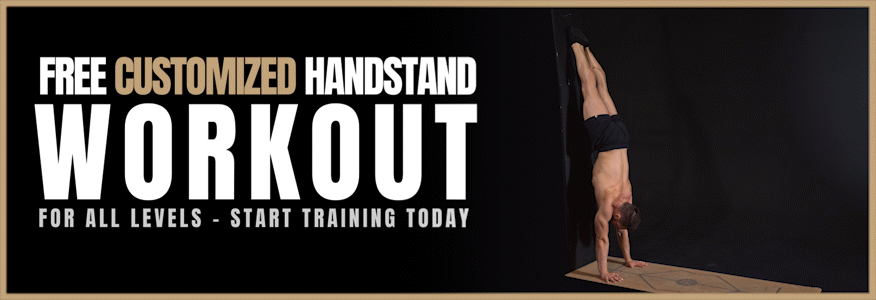







You are always a great coach! Thanks
Great guide, thanks coach!